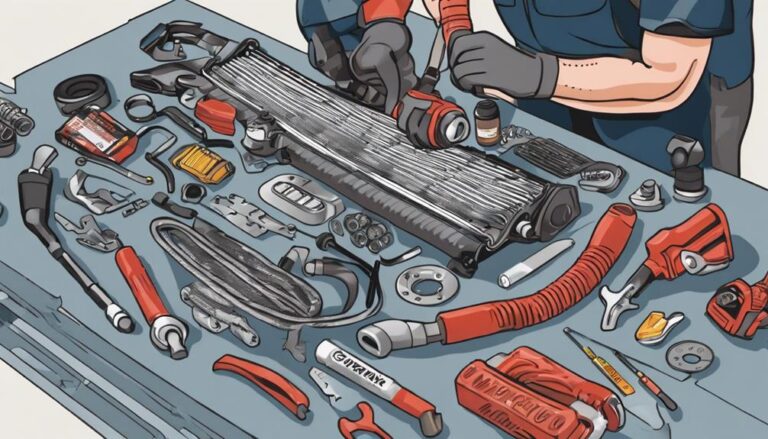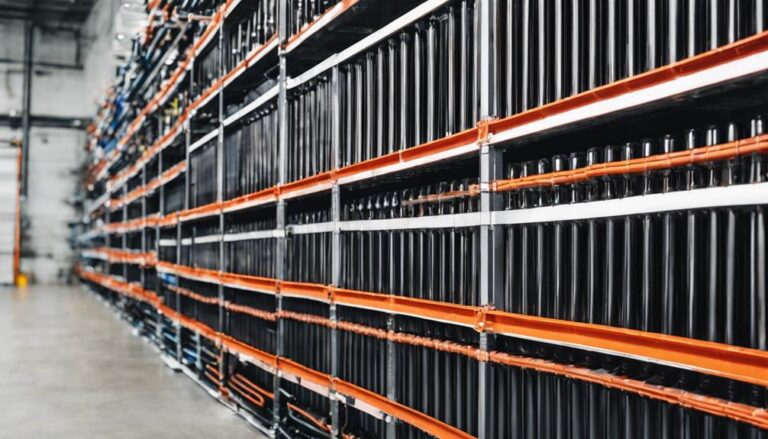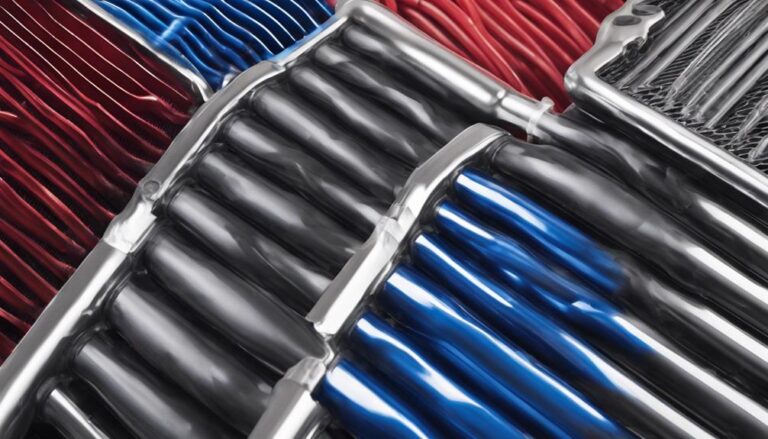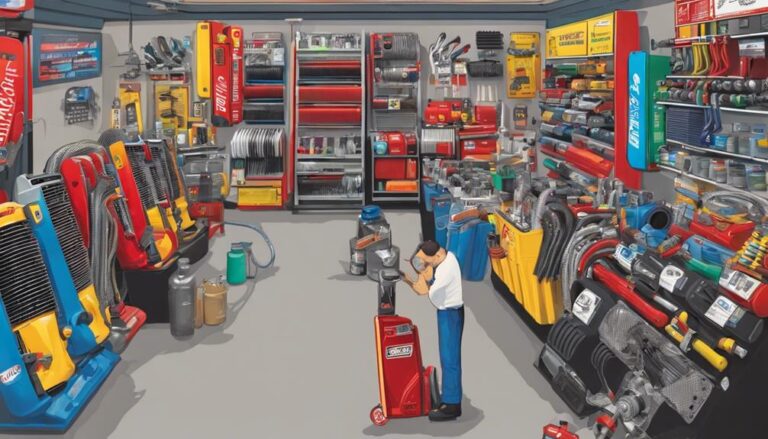Identifying Signs of Failing Radiator and Hose System
If you notice a puddle of bright green or yellow liquid under your parked car, it might be a sign of a failing radiator or hose system. This could indicate a leak in the coolant system, which, if left unattended, can lead to more severe issues with your vehicle.
Understanding the early warning signs and taking proactive measures to address them can save you from costly repairs and potential safety risks while driving. Remember, being vigilant and responsive to these indicators can help keep your vehicle running smoothly and efficiently.
Key Takeaways
- Coolant leaks: Watch for green/orange fluid, sweet smell, and low coolant levels to prevent engine damage.
- Engine overheating: Be vigilant for steam, rising temperature gauge, and act promptly to avoid severe issues.
- Low coolant levels: Monitor for warning lights, leaks, and fluid replenishment to maintain engine health.
- Hose integrity: Check for swelling, sponginess, and cracks in radiator hoses to prevent bursting and engine damage.
Coolant Leaks
If you notice a pool of green or orange fluid under your vehicle, you may be experiencing a coolant leak from a failing radiator hose. This could be a sign that your radiator or hose system is compromised. The sweet smell accompanying the leak is a clear indicator that coolant is seeping out. Constantly replenishing coolant or the Low Coolant Light coming on are red flags that there's a leak in the system that needs immediate attention.
Additionally, observing coolant drips where the vehicle was parked is an important sign of a radiator hose leak. Ignoring such leaks can lead to severe consequences, including engine stalling. Driving with low coolant levels can cause the engine to overheat, potentially resulting in costly engine damage. Hence, it's essential to address any coolant leaks promptly to prevent further complications and ensure the proper functioning of your vehicle's cooling system.
Engine Overheating
Engine overheating is a serious consequence that can arise from a compromised radiator and hose system, potentially leading to significant engine damage if left unaddressed. Signs of engine overheating, such as steam emanating from the engine bay and a rising temperature gauge, indicate a critical issue that demands immediate attention. Ignoring these signs can result in costly repairs or, in extreme cases, engine failure.
Regular maintenance is essential to prevent engine overheating. Checking the radiator hose for leaks, ensuring the coolant levels are adequate, and verifying that the cooling system is functioning at its best are essential steps in avoiding overheating. If you notice any of the signs of engine overheating, act promptly to prevent further damage.
Low Coolant Levels
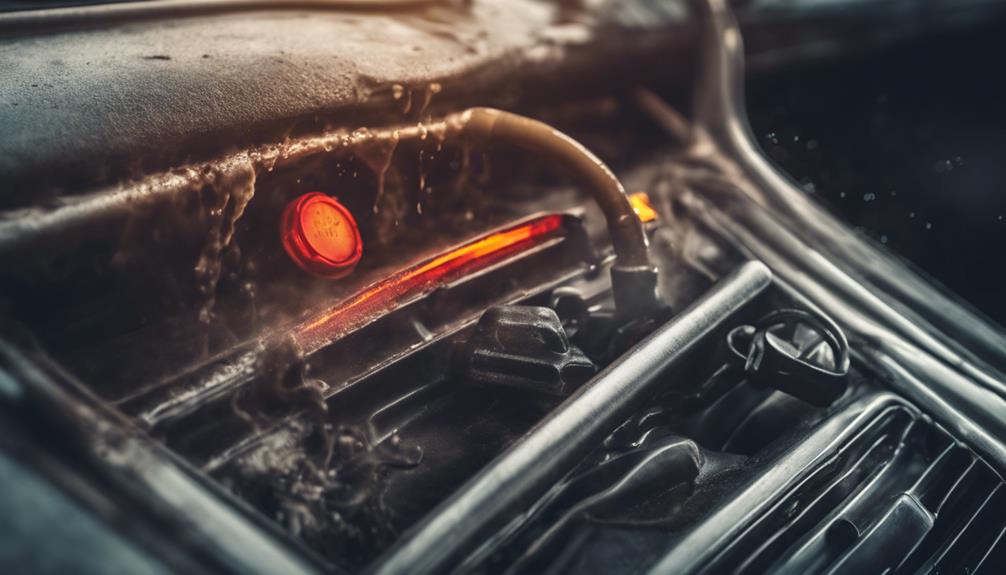
To maintain peak performance and prevent potential engine issues, monitoring coolant levels regularly is essential. When it comes to low coolant levels, staying vigilant can save you from serious engine damage. Here are key points to help you understand the implications of low coolant levels:
- Low Coolant Light Activation: If you notice the Low Coolant Light illuminate on your dashboard, it's a clear indication that your coolant levels are below the ideal range.
- Replenishing Coolant Fluid: Constantly refilling your coolant reservoir without any visible signs of leaks could signal a potential radiator hose leak. It's important to address this issue promptly to prevent further problems.
- Visible Coolant Leaks: Spotting coolant pooling beneath your car when parked suggests low coolant levels. Ignoring this can lead to engine stalling or overheating, underscoring the importance of regular monitoring.
Being proactive in checking and maintaining proper coolant levels is vital in preserving the integrity of your radiator and hose system.
Swollen or Spongy Hoses
Swollen or spongy radiator hoses are indicative of potential bursting due to internal pressure buildup. When hoses become swollen, it is a sign of the material expanding under high temperatures and coolant pressure. Spongy hoses, which may feel soft to the touch, can lose their structural integrity over time, leading to coolant leaks and overheating problems in your engine. Prompt replacement of these compromised hoses is critical to prevent further issues such as engine damage from overheating. Ensuring the integrity of your radiator hoses is essential for the overall health of your vehicle's cooling system.
| Signs of Swollen or Spongy Hoses | Effects on the System | Importance of Replacement |
|---|---|---|
| Swelling of hose material | Increased risk of bursting | Prevent engine damage |
| Spongy texture to the touch | Coolant leaks and overheating issues | Maintain system efficiency |
| Loss of structural integrity | Potential for further damage | Ensure safe operation of the vehicle |
Radiator Hose Cracks
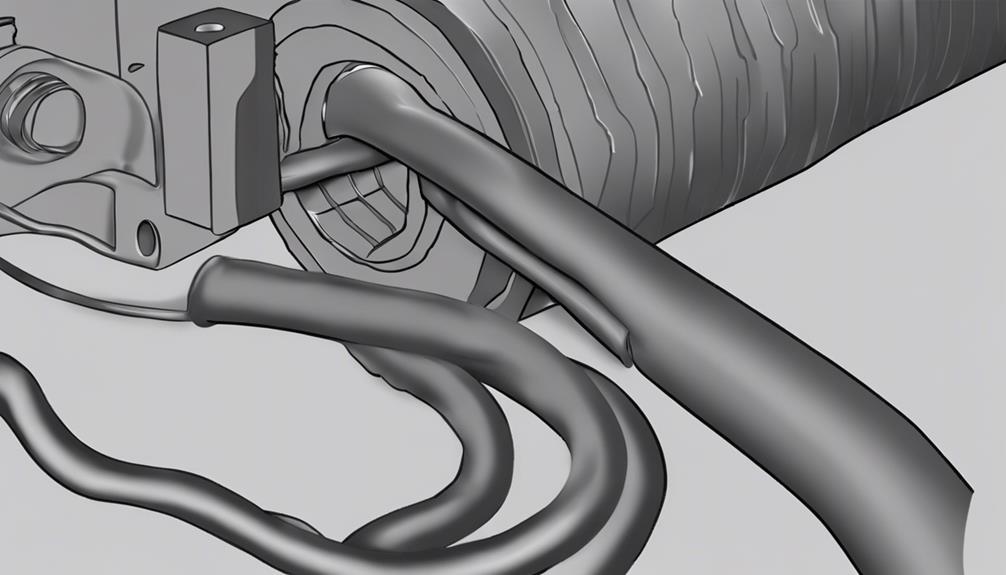
Inspecting your vehicle's radiator hoses for cracks is vital in maintaining peak cooling system function and preventing potential coolant leaks and overheating issues. When dealing with radiator hose cracks, here's what you need to know:
- Bad for Your Engine: Cracks in the radiator hoses can lead to coolant leaks, causing a drop in coolant levels. This can result in the engine overheating, leading to potential damage if not addressed promptly.
- Age and Wear: The combination of heat, pressure, and age can cause radiator hose material to deteriorate, leading to cracks. Regular inspections can help identify these issues early on.
- Replace Promptly: If you notice any cracks in your radiator hoses, it's essential to have them replaced immediately. Ignoring cracked hoses can result in coolant leaks, compromising the cooling system's efficiency and potentially causing severe damage to your vehicle's engine.
Frequently Asked Questions
How Do I Know if I Need a New Radiator or Hose?
If your engine temperature rises unexpectedly, coolant levels drop, or you spot leaks, you might need a new radiator or hose. Watch for signs like cracks, bulges, or rust buildup, indicating a potential cooling system malfunction.
How Do I Know if My Radiator Hose Is Collapsing?
To determine if your radiator hose is collapsing, inspect its condition for flattening or crimping under pressure. Check cooling system performance, engine overheating, fluctuating temperatures, and coolant levels. Confirm hose integrity, material quality, and radiator pressure for best functioning.
How Can I Tell if My Radiator Is Bad?
To determine if your radiator is bad, watch for signs like radiator overheating, coolant loss, rust corrosion, engine temperature changes, radiator cracks, hose bulging, blockages, and wear. Regular radiator maintenance, including flushing, can help prevent issues.
Is My Radiator Leaking or a Hose?
To determine if your radiator or hose is leaking, check for coolant leaks, inspect hoses for cracks, and monitor radiator pressure. Low coolant levels, hose leaks, and overheating issues indicate potential problems. Regularly maintain your system to prevent failures.
Conclusion
To sum up, keeping an eye on your radiator and hose system is like maintaining the beating heart of your vehicle. By promptly addressing leaks, overheating, low coolant levels, swollen hoses, and cracks, you can guarantee smooth and efficient operation.
Remember, a healthy radiator and hose system is essential for the overall well-being of your vehicle. Stay vigilant, address issues promptly, and your car will thank you with reliable performance on the road.


